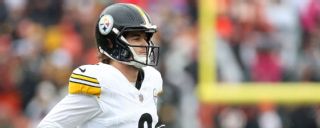|
NFL teams are suddenly and unexpectedly open for trading business. Across the legal tampering period and into the first few days of the new league year, phone lines have been lighting up for a sudden and stunning outburst of trades. There are still hundreds of free agents left unsigned, but for a brief moment, we need to take a step back and look at the impact of what has gone down on the trade market. Let's break down the big trades of the past 48 hours and what does and doesn't make sense for each side. What's fun about these deals are the variety of styles in which they were made. One team moving up in the draft in a pick-for-pick swap? Sure. A veteran dumped for cap reasons? Absolutely. A "second draft" opportunity for a team that appears to be undergoing an identity crisis? You got it. A player-for-player trade? In 2024, it's all happening. What a time to be a football fan. Subscribe: "The Bill Barnwell Show" Let's start with the most recent of these deals, in which the Steelers admitted failure on yet another first-round pick and sent their former quarterback of the future packing: Jump to a trade:
Allen to CHI | Howell to SEA
Pickett to PHI | Ridder to ARI
MIN trades up in the draft with HOU  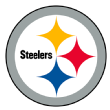 
Steelers trade Kenny Pickett to the EaglesPittsburgh Steelers get: Pick No. 98 and a seventh-rounder in 2025
Philadelphia Eagles get: QB Kenny Pickett and pick No. 120 Using the Chase Stuart draft value chart, this rates out as the equivalent of the Steelers landing a pick in the middle of the sixth round. The more traditional Jimmy Johnson chart sees it like a late fourth-round selection. While teams use the latter chart to talk trade, most organizations have moved onto evaluating players using an evidence-based board like Stuart's. This is hardly what the Steelers planned when they drafted Pickett in the first round of the 2022 draft. He was picked one selection before Chiefs star cornerback Trent McDuffie and three selections before standout Cowboys lineman Tyler Smith, both positions of need for the Steelers. It wasn't a great draft for quarterbacks -- we're going to discuss three different passers from that class who were traded over the past few days -- but Pickett was the player Pittsburgh highlighted as being worth a first-rounder. It's an ignominious end to Pickett's time in Pittsburgh and an admission that he's probably not an NFL-caliber quarterback. If you go back through the passers taken since the league moved to the slotted draft system in 2011, the list of players who failed to make it to a third season with the team that drafted them isn't pretty. Pickett joins Brandon Weeden, Johnny Manziel, Paxton Lynch, Josh Rosen, Dwayne Haskins and Trey Lance as two-and-done with their original franchises.
Barring a few preseason passes that had Steelers fans excited for Pickett's future, it's hard to argue with the decision. He has gone 14-10 as a starter by virtue of protecting the football, but he has been a low-ceiling starter, averaging just 6.3 yards per attempt. His 46.5 QBR ranks 23rd in the league over the past two seasons; the only players below him who were their team's primary starter both years were Baker Mayfield, Zach Wilson and Russell Wilson, who now seems to have a clear path to Pittsburgh's starting role. (Update: On Saturday night, Pittsburgh sent a Day 3 conditional pick in next year's draft to the Bears for Justin Fields.) It doesn't appear the ending came on great terms. Our Adam Schefter reported that Pickett preferred to move on after the Steelers signed Wilson to a one-year deal, while Gerry Dulac of The Pittsburgh Post noted that the organization felt Pickett wasn't handling the Wilson move well and refused to dress as the emergency third quarterback in the Week 17 game with the Seahawks. Pickett had undergone ankle surgery earlier in the season and given way to Mitch Trubisky and then Mason Rudolph, but he appeared to be healthy by the end of December and told reporters before the Seahawks game he was healthy enough to play. Apparently, he felt he had lost his job while being injured. He looks to have been correct. What this means for the Steelers, unfortunately, is they've now failed to hit on another first-round pick, something which once seemed like a formality for the league's best drafting-and-developing organization. Going back to 2016, they have just one first-round pick who has justified picking up a fifth-year option, a very big hit in star edge rusher T.J. Watt. The year before Watt saw them choose cornerback Artie Burns, who lost his starting job in the middle of his third season. After Watt, things have gone downhill. The 2018 pick was safety Terrell Edmunds, who wasn't able to cover at an NFL level. In 2019, the Steelers traded up for linebacker Devin Bush, who wasn't playing on third downs as a rookie before tearing his ACL in Year 2. Two years later, they used a first-rounder on running back Najee Harris, who has averaged 3.9 yards per carry as a pro and is likely the second-best back on the team behind undrafted 25-year-old Jaylen Warren. Pickett was the 2022 selection, and it's still too early to judge 2023 first-rounder Broderick Jones, who started the final 10 games of the season and the playoff loss to the Bills at right tackle. Burns, Edmunds and Bush all had their fifth-year options declined, and Harris should follow, even though it's a relatively modest figure at just under $7 million. Those are missing core pieces for a competitive team. You might have noticed that I skipped 2020, which was the first-round pick the Steelers traded to the Dolphins in exchange for safety Minkah Fitzpatrick. It's hard to argue against that deal, given that Fitzpatrick has been an All-Pro-caliber player at his best since moving to free safety on a full-time basis with Pittsburgh. Landing a young player who might challenge to be a Hall of Famer one day is always going to be a good trade. The arguments against the deal at the time, though, also ring true today: That 2020 draft might have been the best opportunity for the Steelers to land their quarterback of the future, given that they were likely to land their highest first-round pick after Ben Roethlisberger got injured. And while Pittsburgh wouldn't have been in position to get Joe Burrow or Justin Herbert, Jordan Love was drafted with the No. 26 pick, eight picks after where Pittsburgh's selection eventually landed. The Steelers thought they had solved that problem by drafting Pickett, but now, they're starting over. It's true the Steelers have found talent after Round 1: Edge rusher Alex Highsmith, wide receiver George Pickens and cornerback Joey Porter Jr. have emerged as standouts at their respective positions. In the big picture, though, they have come to rely more on talent acquired from outside the organization, either via trades or free agency. OverTheCap's Jason Fitzgerald noted on Twitter before last season that just 50% of the players on the Pittsburgh roster were homegrown talents, one of the lowest rates for any organization. This was once a team that mostly eschewed free agency; go back a decade ago to 2014 and look at Pittsburgh's depth chart and you'll see almost exclusively players who were drafted (or acquired as undrafted free agents) by the organization and developed into standouts. A decade ago, 16 of the 18 players who lined up for at least 50% of Pittsburgh's snaps were homegrown players. That number dropped to 11 of 18 last season. It will likely fall further in 2024 with Pickett and Diontae Johnson both leaving town. The Steelers moved on from their veteran wideout earlier this week, sending him to the Panthers in a swap of late-round picks to land cornerback Donte Jackson. It was a bizarre decision, given that the Panthers were reportedly about to cut Jackson and that Johnson presumably has some more significant trade value on his own. Johnson came under scrutiny for failing to dive and recover a fumble against the Bengals during the season, and his receiving yardage has dropped from 1,161 yards in 2021 to 717 in 2023, but some of the blame for those issues might fall on the quarterback play. It's not all doom and gloom for the Steelers, who managed to ride a 9-2 record in games decided by seven points or fewer into a playoff spot, but it's hard to argue they are an organization heading in the right direction. They've cleared out some of the people who could be blamed for the issues I've written about here. Long-time general manager Kevin Colbert retired after the 2022 draft. They fired offensive coordinator Matt Canada. There's no question Mike Tomlin is a great coach, but if they do finally regress toward the mean in 2024, this roster and what has been done over the last six years is going to be cast in a harsh light. From the Eagles perspective, this is a relatively low-risk gamble for a team that previously didn't have a backup quarterback. Pickett is owed just $4.6 million over the next two seasons combined, a modest cost even by backup quarterback standards. He isn't exactly a fit in the quarterback run game that the Eagles use with Jalen Hurts as their starter, but with Philadelphia making atypical investments at running back (Saquon Barkley) and linebacker (Devin White) in recent days, this trade is a reminder that general manager Howie Roseman is still going to hunt for value as he fills out the roster.
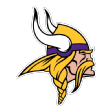 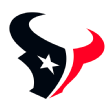
Vikings trade up to land another first-round pickMinnesota Vikings get: Pick Nos. 23 and 232
Houston Texans get: Pick Nos. 42 and 188 and a 2025 second-round selection It's fun to see a plan come together in real time. The Vikings, who just lost Kirk Cousins in free agency, certainly seem to be hatching a move up the draft board for a quarterback after they struck a deal with the Texans. General manager Kwesi Adofo-Mensah has typically traded down and amassed extra draft capital in his deals since he got the job in 2022, but Friday's deal has the Vikings going the other way, perhaps in a move for J.J. McCarthy (Michigan), the No. 4 quarterback in what is considered a great draft class. To move up from No. 42 to No. 23 and land a second first-round pick -- they also own No. 11 -- the Vikings moved down one round on Day 3 and sent a 2025 second-rounder to the Texans. For Houston general manager Nick Caserio, this is some extra draft capital after moving up in last year's draft to grab edge rusher Will Anderson Jr.; the 23rd pick was the third and final first-round pick Houston landed from Cleveland as part of the Deshaun Watson trade. By the draft charts, this is an easy win for the Texans. The Johnson chart values this as a 21% premium as part of moving up, while the Stuart chart sees this more like a 51% premium. The analytically inclined Vikings are likely using something similar to the Stuart chart in their internal calculations, so I doubt they were naive about the cost they were paying to get that extra selection. Analytically inclined teams usually value future picks more than old-school organizations, so this seems at odds with how Minnesota would handle its draft capital. So, why would the Vikings pay $1.50 on the dollar to get that first-round pick? The simplest and most obvious explanation seems to be moving up for a quarterback by packaging pick Nos. 11 and 23. By the Johnson chart, that would be enough to get the Vikings all the way up to Arizona at No. 4, although a more realistic landing spot might be the Chargers at No. 5. Moving up to No. 5 wouldn't be without risk; the Cardinals probably don't want to drop from No. 4 to No. 11, but they might be willing to drop two spots to the Giants at No. 6, which would allow Arizona to still land a premium wide receiver while letting the Giants cut in line ahead of the Vikings. The bigger move would be to try to jump to the No. 3 pick, which would guarantee the Vikings one of Caleb Williams (USC), Drake Maye (North Carolina) or Jayden Daniels (LSU), the top quarterbacks in this class. They would have to convince the Patriots that passing up the opportunity to take one of those quarterbacks would be the right idea, which seems costly. The Patriots need solutions at wide receiver and left tackle, and the Vikings have standouts at both positions in Justin Jefferson and Christian Darrisaw, but trading either player as part of a move would set that new quarterback behind before he ever steps on the field. And while Nos. 11 and 23 wouldn't be enough to land the third pick, Nos. 11, 23 and either Jefferson or Darrisaw would be too expensive of a price to pay. If the Vikings do make a move with the Patriots, it would have to be their two first-rounders and a future first-rounder as the basis for a deal. Does the trade up guarantee the Vikings are going quarterback hunting? Not necessarily. We saw the Eagles do this in 2016, when they sent two players to the Dolphins to move up from No. 13 to No. 8, then sent the No. 8 pick to the Browns as part of a package to nab the second pick and draft Carson Wentz. In 2022, though, the Saints sent a future first-rounder to the Eagles to land the 19th pick, but instead of using Nos. 16 and 19 to move up for a quarterback, they drafted wideout Chris Olave and offensive tackle Trevor Penning. I still believe the Vikings are in the market for a quarterback, but there are a few reasons why this move seems curious. Let's start with the trade process itself. They already are somewhere between a 20% and 50% premium to land that first-round pick from the Texans and will then presumably need to pay another premium to move up again to get into the top-five. Why didn't they just send those picks directly to the Patriots, Cardinals or Chargers, who would be getting more value by taking the second-round picks per every draft chart than they would by landing the No. 23 selection instead? The logical argument would be the Vikings knew their trading partner preferred the 23rd pick and got that selection to facilitate a deal. Fair enough, but if that's the case, where's that second trade? If the Vikings were ready to make that first deal, they should have made these swaps in one fell swoop, like the Eagles, 49ers and Dolphins did with their series of trades in 2021 that landed San Francisco Trey Lance. Now, the other side of the deal to move up -- the teams picking from Nos. 3 to 5 -- has all the leverage and can demand more if so inclined. What's to stop the Patriots, for example, from asking the Vikings for extra draft capital knowing Minnesota has already made this first swap? There was presumably no rush to get the first deal done with the Texans, and if the Vikings don't have a specific trade up for a quarterback in the making, it's hard to see how this deal makes sense for them. On top of all that, if the Vikings were going to move up for a quarterback, why did they just give Sam Darnold a one-year contract worth $10 million? They might have wanted a bridge quarterback to start the season, but they more than doubled Darnold's compensation from a year ago despite him spending the vast majority of the season on the bench in San Francisco. Paying that premium only made much sense if they were planning on making Darnold their starter for 2024. Something's missing here to have this all make sense. If the Vikings are moving up for a quarterback, why are they giving other teams time to beat them to the bunch or change the deal? If they're not, why did they feel the need to get more draft capital now when they're planning to start Darnold? Or could the move up have been to draft a quarterback such as Bo Nix (Oregon) at No. 23? Minnesota's trade raises more questions than answers.
 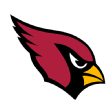
Falcons swap Desmond Ridder for Rondale MooreAtlanta Falcons get: WR Rondale Moore
Arizona Cardinals get: QB Desmond Ridder A player-for-player trade! What a time to be alive. With Kirk Cousins for the Falcons in free agency, Atlanta no longer had a need for its deposed starting quarterback. With two years left on his rookie deal, the Falcons sent Ridder to the Cardinals for Moore, who is entering the final year of the four-year pact he signed as a second-round pick in 2021. At its core, this is a change-of-scenery swap. Ridder looked overmatched as the starter in Atlanta and was going to be buried on the depth chart for the next two years. Moore was drafted by the departed Steve Keim/Kliff Kingsbury regime in Arizona and had 1,201 combined receiving yards over his first three seasons combined. There's something to this deal for both sides. The Cardinals get a backup for Kyler Murray, whose spot on the roster is secure for the foreseeable future. Ridder's 42.8 QBR over the past two seasons hasn't been starter-caliber, but it's perfectly fine for a backup. He's set to make a total of $2.6 million over the next two years, none of which is guaranteed, so Arizona can cut bait if it doesn't think he's up to the task. If he is, landing a competent backup quarterback for $1.3 million a year is good value. After signing Cousins, Atlanta had no leverage in moving Ridder, which is why it wasn't able to land something more significant. It will get to take a flier on Moore, who never seemed to land in the downfield role the Cardinals needed and his college tape suggested after an electrifying run at Purdue. Injuries and a 5-foot-7 frame spoiled his chances of becoming a first-rounder, but after missing 12 games over his first two seasons, he was active for all 17 games a year ago. Moore averaged 1.3 yards per route run over his three seasons in Arizona, which ranked 86th out of 111 wideouts over that timeframe. Kingsbury seemed hell-bent on using Moore as a gadget player on screens, as his 38 receptions on screens over the last three years is topped only by Bucs wideout Chris Godwin. Moore has just 16 targets on deep throws over the first three seasons of his career, catching seven of them for 252 yards and two scores. And after serving as a return man during his rookie season, he has just one return over the last two years. With the Falcons adding Moore and Darnell Mooney over the past week, new offensive coordinator Zac Robinson will need to find roles for both when Atlanta plays 11 personnel. Moore might only be capable of that gadget role out of the slot, but if that's what he plays, it keeps Mooney from spending time in the slot, where he lined up more than half the time a year ago. And if Moore's that player, he needs to catch more than 65% of his passes, which is where he landed in 2023. Moore entered the draft with elite traits, and I like the Falcons taking a flier on a player with his upside as a potential fifth or sixth playmaker in their offense. At the same time, given the cost of even competent backup quarterback play on the open market, this deal feels more likely to play out as a Cardinals victory.
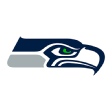 
The Seahawks land a new backup in Sam HowellSeattle Seahawks get: QB Sam Howell, picks Nos. 102 and 179
Washington Commanders get: Pick Nos. 78 and 152 This is a similar swap to the Pickett deal, where a quarterback is being used to generate a modest increase of draft capital. While the Johnson chart suggests this trade values Howell as a late third-round pick, the Stuart chart pegs it as something closer to a selection in the middle of the fifth round. The latter seems more likely for a player who entered the league as a fifth-rounder and has already made it through half of his rookie deal. At the same time, Howell has proven he was underdrafted and is likely the best non-Brock Purdy quarterback in the 2022 class. Installed in an Eric Bieniemy offense and asked to throw a league-high 612 times last season, he was up for the challenge, if not particularly efficient while doing so. He led the league in interceptions (21) and took a league-high 65 sacks. He had a 13.5% sack rate through Week 7 before settling in and cutting that in half to 6.6%. It's one thing to take a lot of sacks and throw interceptions when you're hitting big plays, but Howell averaged just 6.4 yards per attempt. Adjusted net yards per attempt, which incorporates sack yardage, ranked him 30th out of 33 quarterbacks last season. Only Joshua Dobbs, Mac Jones and Bryce Young were worse. Even those numbers were juiced by spending a ton of his season in garbage time. Howell threw 144 passes in spots in which the Commanders had a win expectancy below 10%, averaging 6.7 yards per attempt in those moments. It probably isn't helpful that Jacoby Brissett was phenomenal in a small sample filling in for Howell, as the new Patriots signing went 18-of-23 for 224 yards with three touchdowns and no picks when Ron Rivera decided to take Howell out of the lineup for stretches late in the season. I suspect the Seahawks are trading for Howell because of his traits as opposed to his performance. He has a legit NFL-caliber arm, although he doesn't often get a chance to show off that prototypical arm strength when he's throwing out of structure or on the run. The 23-year-old can scramble, and he rushed for 263 yards and five touchdowns a year ago. Is he a starter? Probably not. Can he be a useful player as the second or third quarterback while making $2.1 million unguaranteed over the next two years? Probably. For the Seahawks, he'll be a replacement for Drew Lock, who left to join the Giants. (Depending on who you ask, Lock is either going to be the backup or challenge Daniel Jones for the starting job.) Nothing about Howell's 2023 play suggests he's on the level of Geno Smith, who finished the season playing his best football after returning from a groin injury, but moving to a less hopeless situation might unlock better play from Howell. Like the Falcons with Ridder, the Commanders are moving on at quarterback and didn't have much need for Howell. The new Adam Peters-led regime decided to go in a different direction at backup and sign Marcus Mariota, who is a better and more expensive version of Howell, down to the lofty sack rates. It would be a shock if Washington didn't draft a quarterback with the No. 2 overall pick. Moving into the third round gets the franchise a sixth top-100 pick in April's draft.
 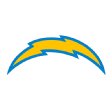
The Bears acquire Keenan Allen ... for what?Chicago Bears get: WR Keenan Allen
Los Angeles Chargers get: Pick No. 110 I have to say it every year: Trades in the NFL aren't about talent. They're about leverage. You need talent to have leverage, but there's invariably one or two trades a year that don't make sense at first glance in terms of players and draft capital. It's almost always because the trading team didn't have the sort of leverage we would typically associate with trading away a valuable player. Last year's example was the deal that sent Jalen Ramsey to the Dolphins for backup tight end Hunter Long and a third-round pick. This year's example is the Bears landing a No. 1 receiver for a Day 3 pick. After squeezing their cap last year to try to make a deep playoff run, a disastrous season on the field led to tough decisions off it. New coach Jim Harbaugh & Co. had to get under the cap and had four key players on significant contracts who were going to get them there. In the end, none of the four made it through the week unscathed. Edge rushers Joey Bosa and Khalil Mack took pay cuts, which must have made Mack the first player in league history to rack up 17 sacks and take a pay cut of more than $4 million in the process. Again, that's leverage: Mack only takes that pay cut because the Chargers (and Mack's representation) suspected there wasn't a deal for more than $19 million waiting for the 33-year-old on the open market. Wide receiver Mike Williams was cut, and the Chargers finished the job by trading Allen to the Bears. Why wasn't there more of a trade market? Leverage. Other teams knew the Chargers needed to make a move and weren't going to pay a premium in terms of draft capital. Allen is 31 years old, due $23.1 million in 2024 and is a free agent after the season. He's a one-year rental, and while he has mostly gotten past the injuries that marred the beginning of his career, he has missed 11 games over the past two seasons with hamstring and heel ailments. The Bears could negotiate an extension with him as part of this trade, but it would likely require the veteran to agree to a pay cut from what he has made on this last deal, which can be a sensitive process. One thing that's not in question? Allen's ability. He can still play. The 11-year vet averaged a robust 2.5 yards per route run last season, which ranked 12th in the league. He has a reputation for being able to get open in a phonebooth, and ESPN's advanced metrics don't see much slippage there. Allen posted a 91 Open Score this past season, which was the best mark in the league. That's comfortably the best mark he has posted by this metric over the past few years, and it'll be on new offensive coordinator Shane Waldron to find opportunities for Allen to operate in space and use his short-area quickness to get open. General manager Ryan Poles didn't find the market he was hoping to land for quarterback Justin Fields this offseason -- he ended up sending Fields to Pittsburgh for a Day 3 pick in 2025 -- but he has to feel like he has put Caleb Williams (or whomever he drafts at No. 1 overall) in better shape. With Allen, tight end Gerald Everett and running back D'Andre Swift in the mix, the Bears have added playmakers around DJ Moore and Cole Kmet. Poles brought in extra depth along the offensive line in Coleman Shelton and Ryan Bates, but the path seems clear for Chicago: It will take a quarterback with the top pick and its left tackle of the future at No. 9.
|

